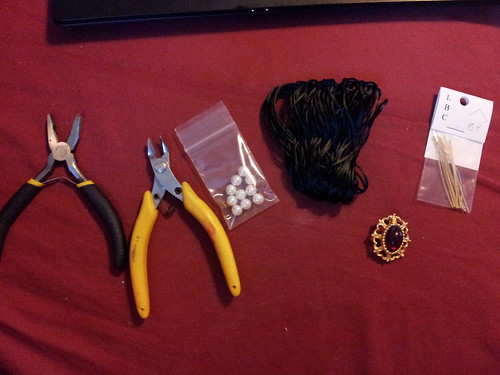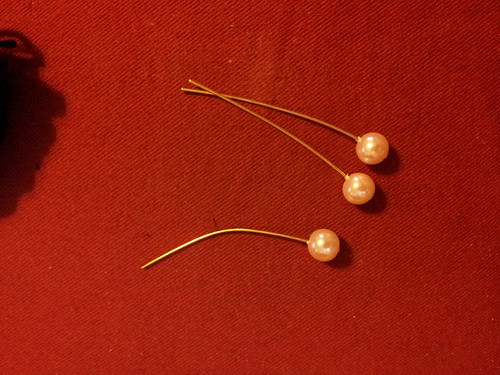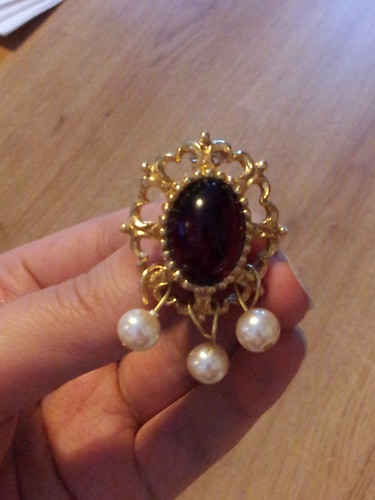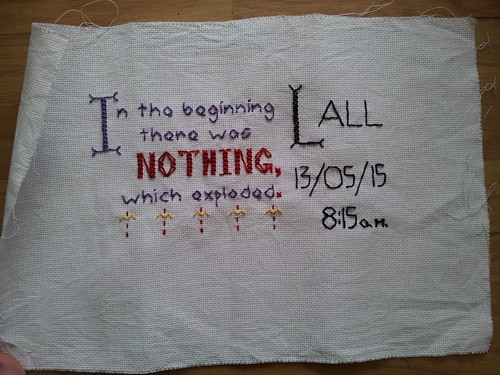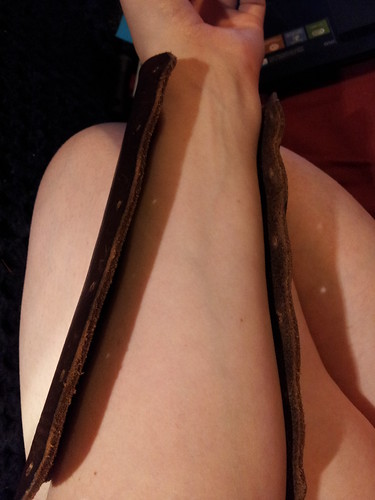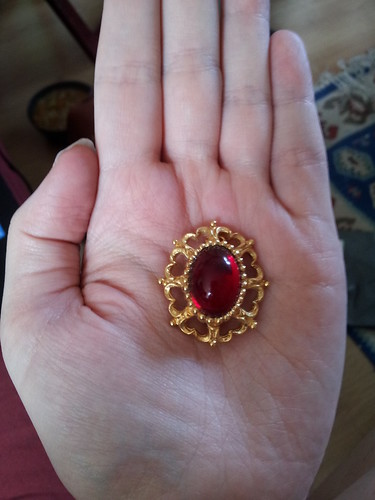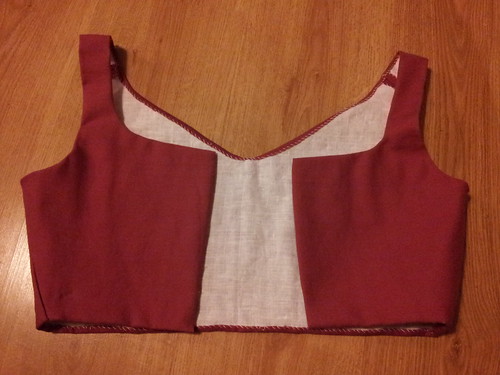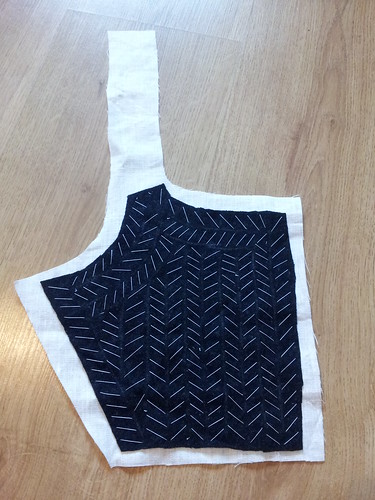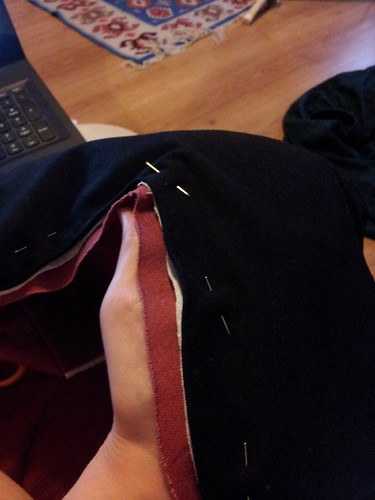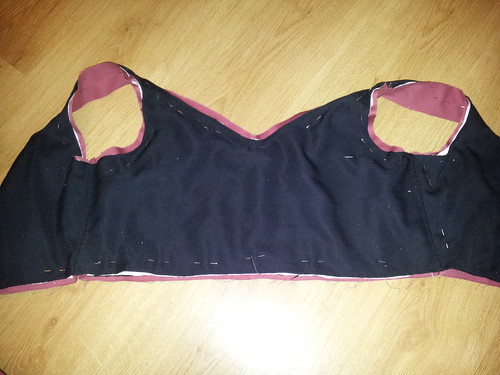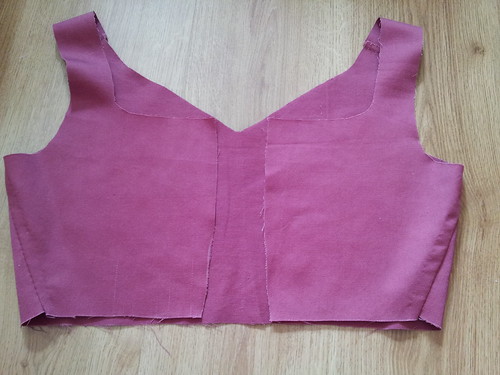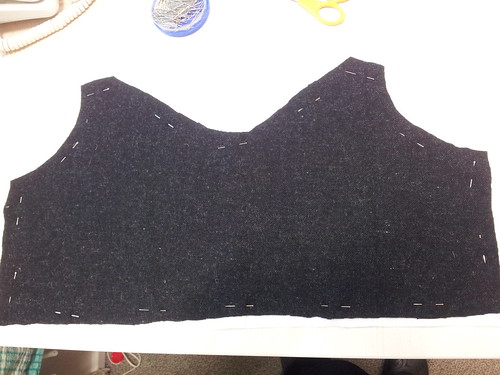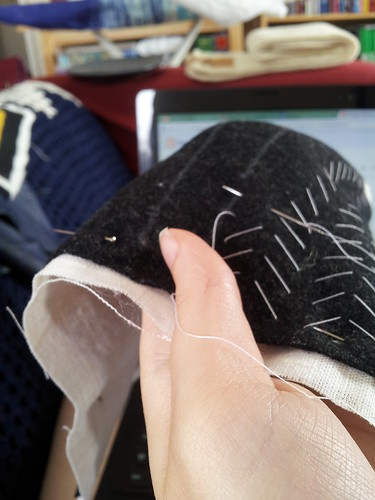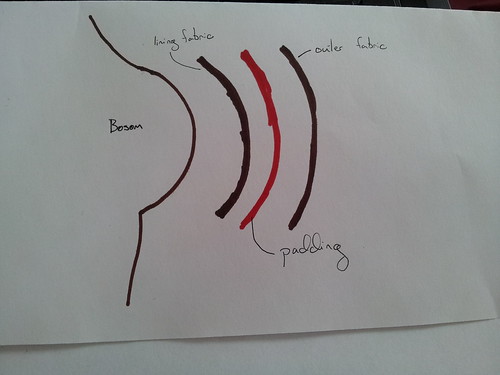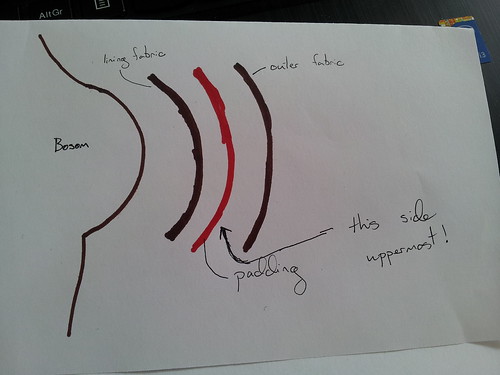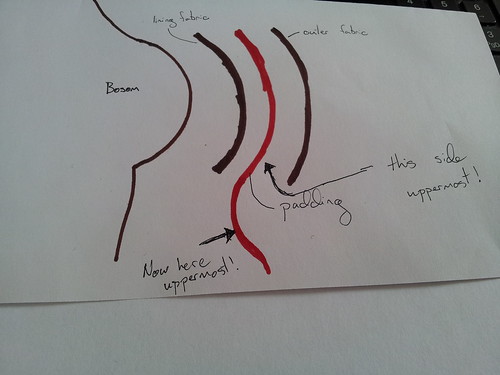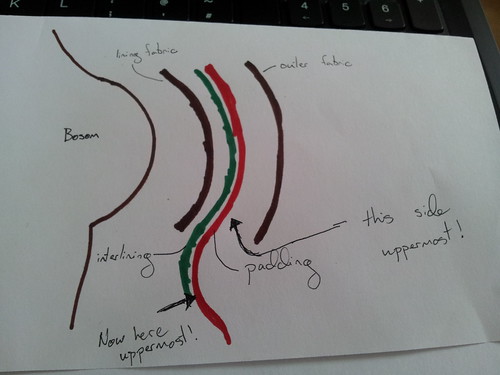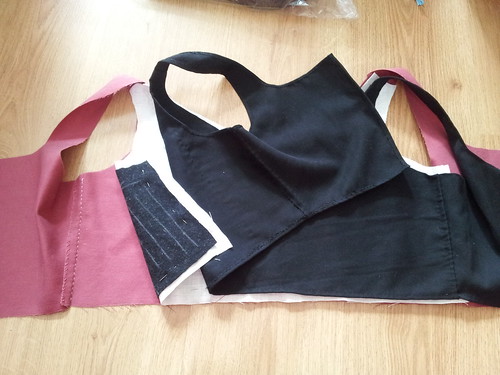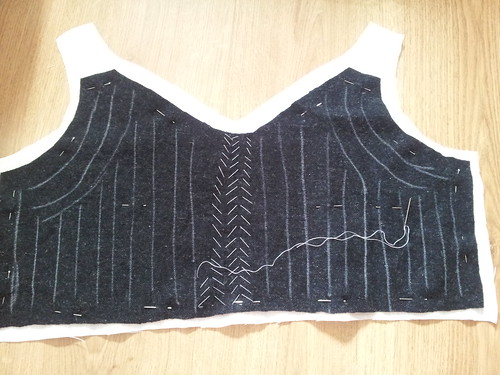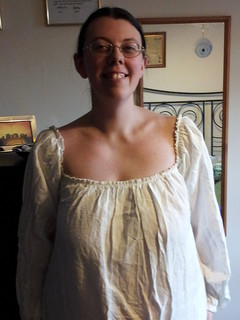I have an ample bosom. The most challenging part of any sort of fitted garment is always going to be the bodice, especially in situations like this where I won't be wearing any modern foundation garments underneath. Of course, I've never actually made any sort of structural bodice, and even if I had there aren't any extant garments from this period to get patterns from.
Ah well, nothing like a challenge, right?
Weaving Friend came to visit and showed me her trick for starting a bodice block: using a pillowcase. It's already a torso-shaped tube, so the "careful" application of scissors, Sharpie, and pins resulted in something resembling a bodice.
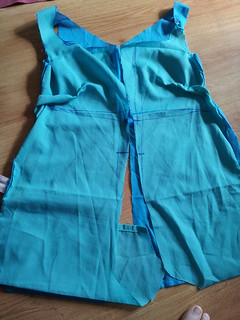
Incidentally, having someone walking around your body with a pair of fabric shears is pretty scary. Fortunately Weaving Friend is pretty awesome and only a little scary.
Once we'd gotten this made, I made a second block from the same polycotton bedding as the pillowcase. It's too flimsy to do any of the structural experimentation, but it's good as a way to measure things like the length of the straps.
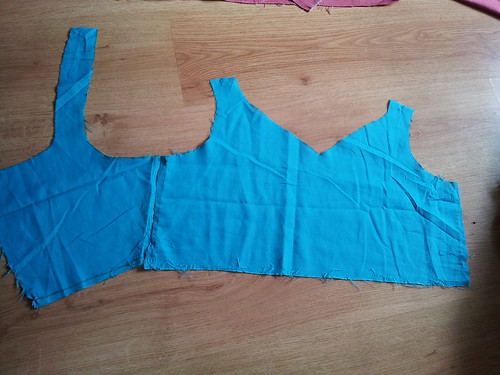
Next up, the block for fitting and lacing. This one is made of a denim offcut I bought years ago. It's not what I'll be using for the garment, but it's heavy, stiff fabric, so I can get a sense of how the lined bodice will behave.
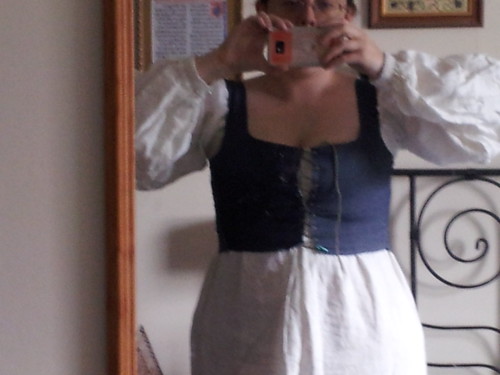
There are some wrinkles under the bust, but not too many. What is very obvious in this picture is that I've cut the front panels too wide. There should be a gap of several inches between the laced fronts, but they meet in the middle all the way up.

The side silhouette is pretty good, though looking at it I think the armscyes are too far forward. If I trim about a centimetre off the side seam on the front panels, that should fix both the armscye placement and the front opening. The straps are also too long. There ought to be a little more lift than there is.
And finally, the back view.
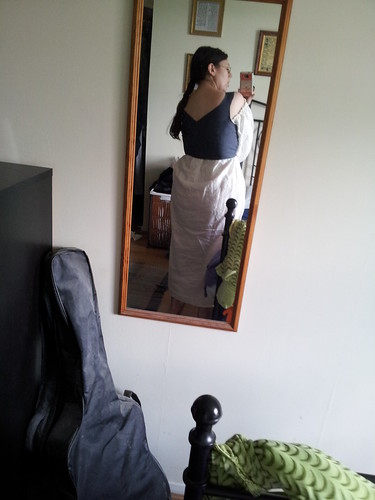
This is where you can see the only real issue with the German chemise. There aren't any gores, which is what's causing the weird bunching over my butt. Other than that, the length is pretty good. And the bunching won't be visible once there's a skirt attached to the bodice.
You can see shoulder seams in this portrait:
 |
| Botticelli, c. 1475 |
They are pretty far in the back, which is what I've done with the block in the above photos.
The composition of the original painting, along with the style and dress, suggests to me that it is most likely from the workshop of Ghirlandaio, giving it an approximate date of of 1480-1494. See how similar they look?

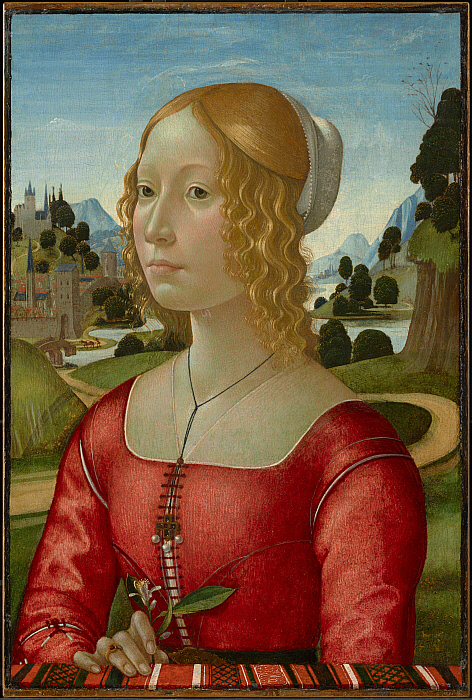
This one even has a hint of a lace cap, too, and what looks like strings tied under the chin.
Helpfully, the original of my painting was last seen in the 1930s, but its current whereabouts are unknown. I'm going to try to track down the article in which it was cited, but that may take a while.
